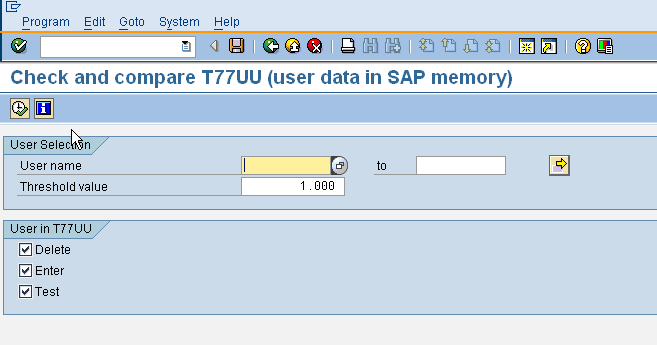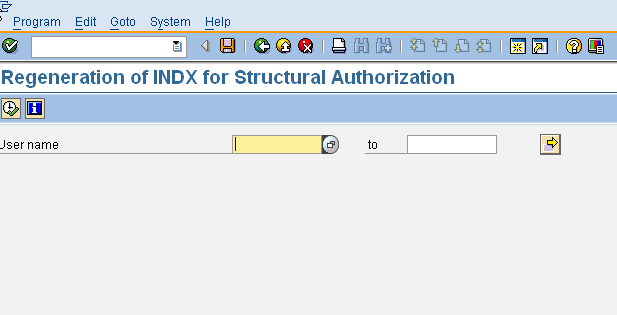PD Profiles – Performance
In a large organization using structural authorizations, the PD profiles assigned to a user might return thousands of distinct objects. Evaluating the entire PD profile at run time to generate the object list, for each access to HR data, can lead to a significant degradation in performance of HR transactions. Since the performance penalty is mostly due to the evluation of the entire object list for an user during run time, the situation can be improved by storing the list of objects for a user.
SAP provides a table T77UU to store a index of all objects returned by the PD profiles for each user. However, since this is a static list of the objects we have to periodically regenerate the index for all user who are maintained in this table. If a user is not entered in this table, his PD profiles are evaluated at runtime to generate the object list. This will consume more time but will not adversely impact performance if the number of objects for the user is below a certain critical threshold.
The T77UU table is very rarely maintained manually. SAP provides two programs, RHBAUS02 – Check and compare T77UU (user data in SAP memory) and RHBAUS00 – Regeneration of INDX for Structural Authorization, to automate updation of the table and regeneration of the user indexes. The screen below shows, the selection criteria for the RHBAUS02 report. The report can be run for one or multiple users and for a certain threshold level of HR objects. The program evaluates the PD profiles for all the users entered in the selection screen and if the number of authorized objects returned is more than the threshold value updates the user in the T77UU table. Conversely if the number of objects for a user falls below the threshold, the user entry is removed from the T77UU table. Typically , a weekly batch run should be sufficient to take care of changing org structure and the profile assignment for users.


So should we run RHBAUS02 first and RHBAUS00 later on a periodical basis in a organistion where we can expect daily om changes.
Please also elaborate on the use of job RHBAUS02
are these jobs still need to be run when we are using context solution to assign profiles to users through roles using p_orgincon and orgxxcon objects
I think the functionality behind RHBAUS02 is already covered in the post below. Just go through it as I really don’t anything more to say.
Normally both these jobs are scheduled to run in the background. RHBAUS00 should be scheduled once RHBAUS02 has finished.
Lastly, both these reports function in the same way when using the context solution